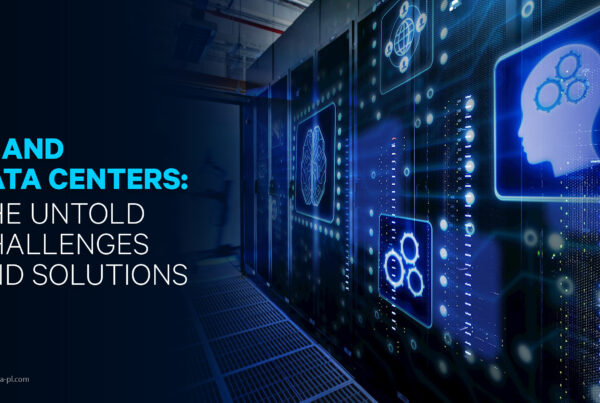Data centers are ridiculously energy-hungry facilities, supplying power to hundreds of server racks, lighting the building, keeping the servers cool, etc. All of this is an energy efficiency nightmare. Between the rising power costs and responsibility to reduce the carbon footprint, every organization is looking for a way to curtail the power consumption in their data centers.
A substantial portion of data centers energy usage and operational expenditure goes in cooling. This makes efficient cooling an important factor in bringing down, the overall costs and energy consumption of the facility.
Energy costs have been in the list of highest rising expenditure for data centers and therefore it is no surprise that giants like Facebook and Google have migrated to the extreme north, to naturally cool their data centers, to be able to rely on renewable energy, to reduce their energy consumptions and proclaim their environment responsibility mandate.
The rise of edge computing is demanding a distributed approach with respect to data storage and processing. We are moving towards an era of multiple small data centers scattered around the world near the data generation points. This development has also laid the groundwork for modular and containerized data centers, which can be deployed quickly and operated efficiently. They can be repurposed at another location and also can be scaled up or down depending upon the future requirements. These technologies will flourish very well in colder climates bringing down the PUE of the data center closer to 1.
The Colder Climate Temptation Explained
The data centers of today are working towards reducing energy usage while catering to the explosive growth of the internet. Most data centers consume almost as much non-computing energy (like cooling and power conversion) as they do to power their servers. The concept of green data centers, which include free cooling and the use of renewable power source is also becoming increasingly popular.
Colder climates are favorable for the data center as they diminish or sometimes even eliminate the reliance on conventional cooling systems which are energy-intensive. With cooler climatic conditions the organizations can just run the naturally available cold air or chilled water into their data center, bringing the temperature down.
To save almost 40% of their capital costs, reduce the operational expense significantly and motivation to go green, data centers are increasingly and interestingly deciding to migrate north.
Looking Beyond Europe for an Icy Abode
The favorite destination to cool one’s data center until recently has been Northern Europe, with its cool weather and abundance of renewable energy. But this obvious location choice is now starting to pose some problems. The central issue being latency, although remote climates may have been completely acceptable for some high performance –computing workloads like big data analytics, it will not be the case everywhere, especially latency sensitive businesses where instant results are expected by the end user.
So, how do we naturally cool data centers and address latency we looked for a location beyond Europe?
Well, the basic requirement of a naturally cooled data center now is a location which is cold, offers low-cost energy and is near to population centers. This makes Canada an ideal location, as it is already famous for its extremely cold weather and a well-educated labor pool. Canada also has areas which are rich in easily-utilizable free energy.
Canada has a lot to offer to data centers that are looking for a strategic relocation or expansion. Some of the reasons to move to Canada are:
- Climate – Data centers can take advantage of Canada’s cold climate by using cold air or water to bring down its energy cost
- Supplies – Clean and cheap power, access to water and high bandwidth internet is essential to any data center facility, and are readily available in Canada, making it an ideal location to construct power-hungry data centers
- Government Policies– Financing, research grants, and tax benefits are common incentives available in Canada
- Data Security– Data security is the primary concern for every data center, and Canada as a location ensures the security and privacy of their data with its political stability
Owing to its very cold climatic conditions and its proximity to the population centers of the American market, Canada is emerging as the new data center hub.
References:
https://www.theglobeandmail.com/report-on-business/economy/canada-competes/why-cold-canada-is-becoming-a-hot-spot-for-data-centres/article6598555/
https://www.datacenterknowledge.com/archives/2012/10/16/where-will-the-next-silicon-valley-be





